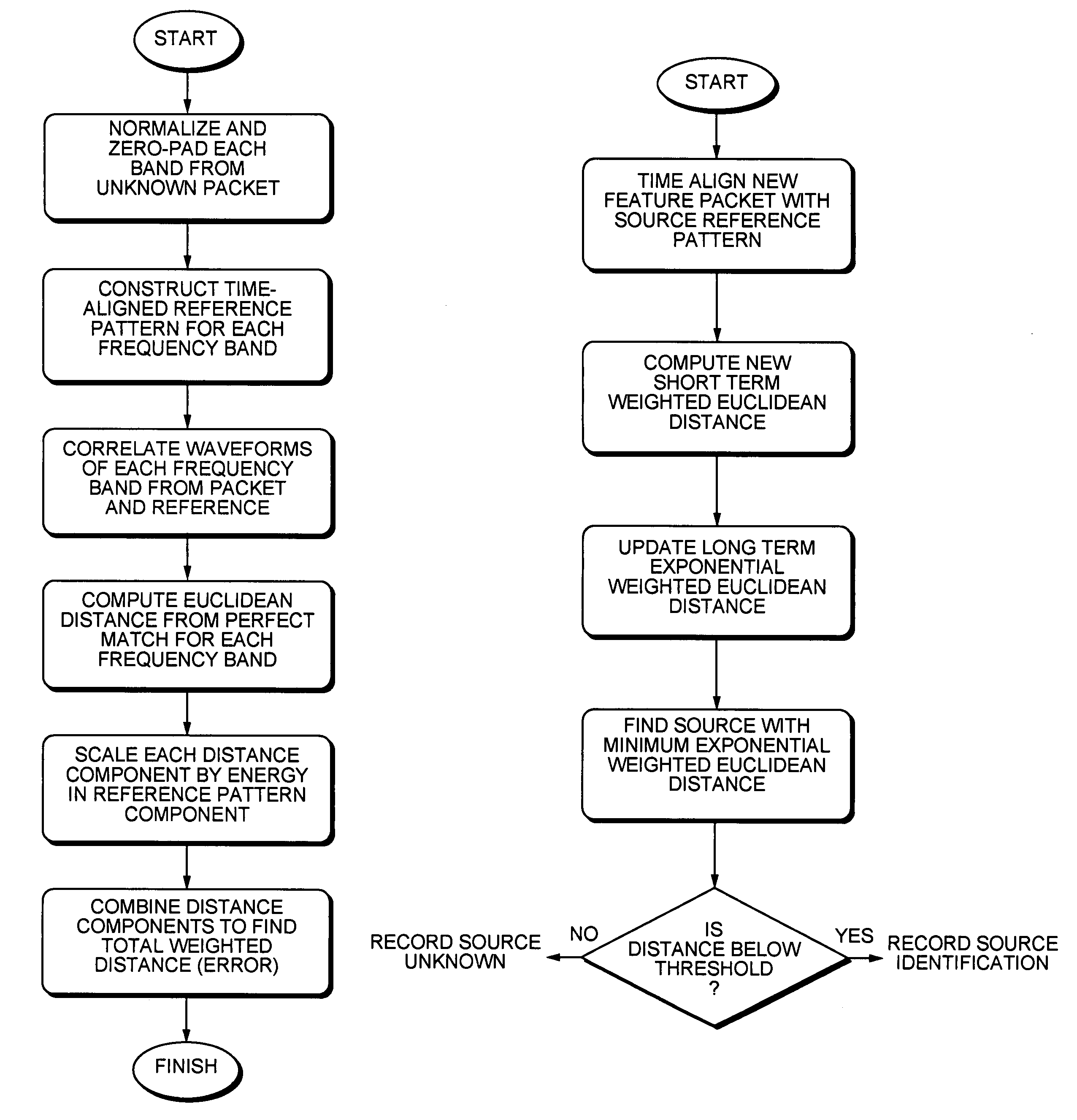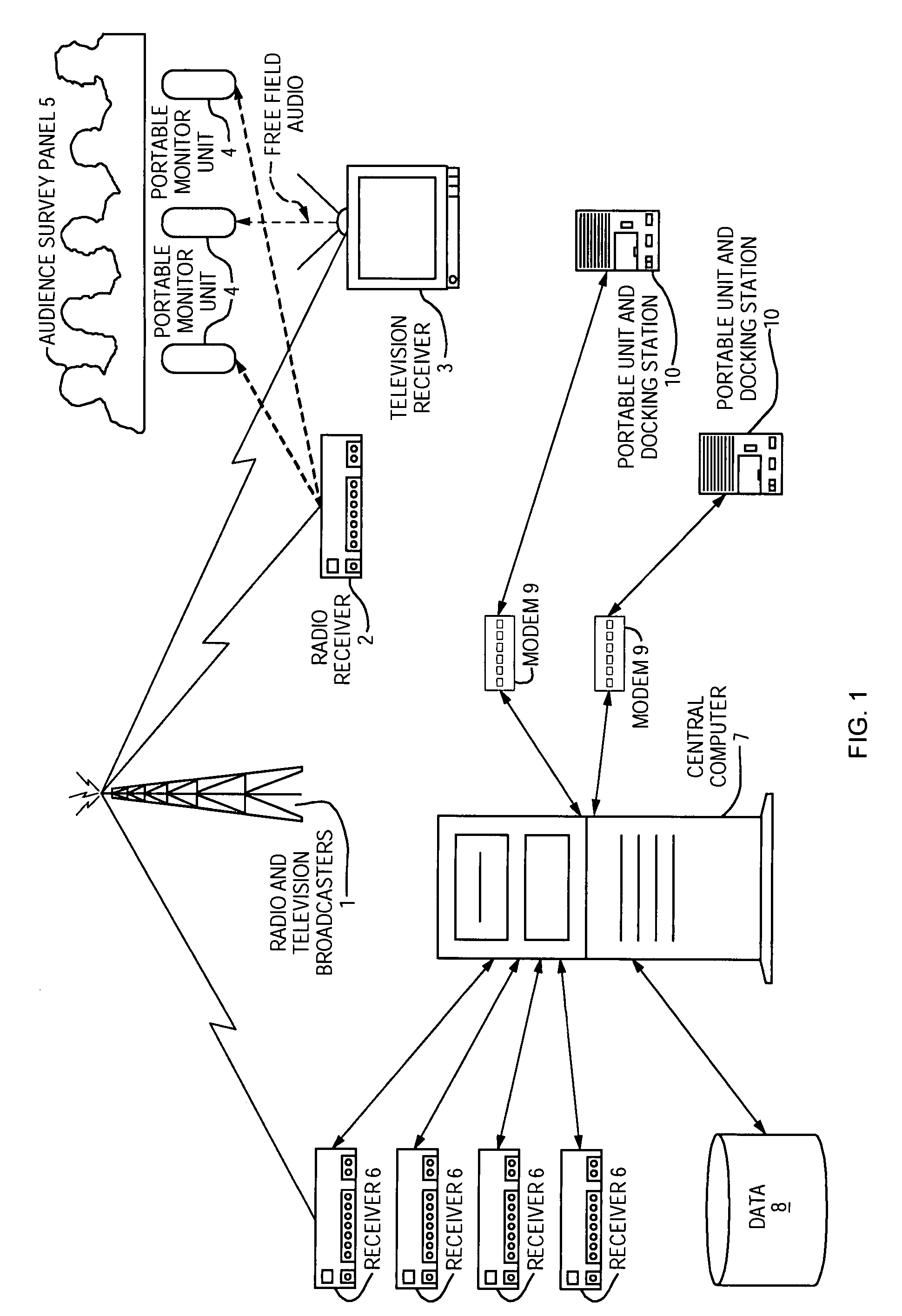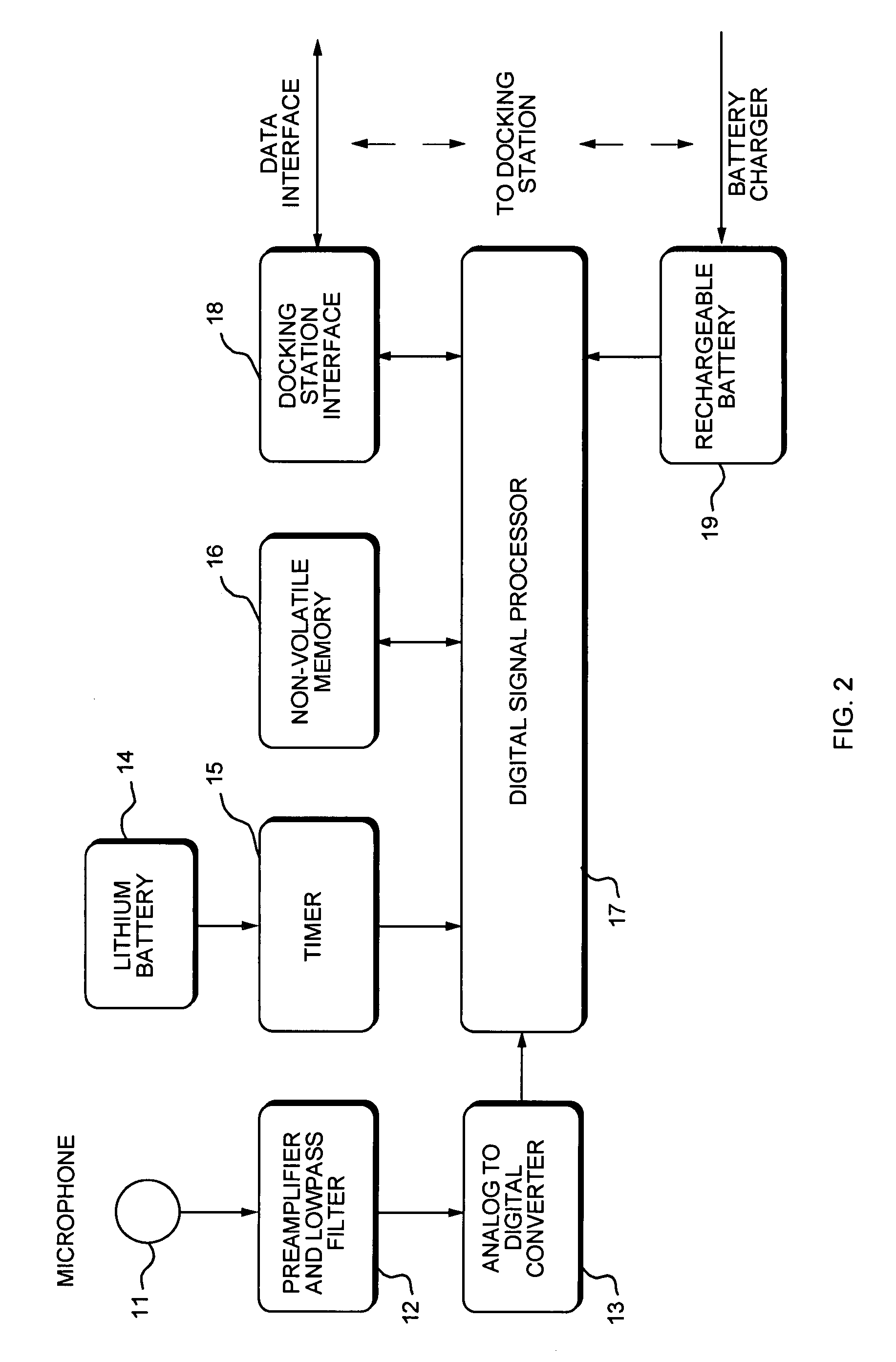Audience survey system, and system and methods for compressing and correlating audio signals
a technology for analyzing audio signals and audio signals, applied in the field of analyzing audio signals, can solve the problems of cumbersome and inaccurate maintenance of manual logs, additional time-consuming process for transferring information in the logs to an automated system, and additional expense and complication for broadcasters that may not be acceptable, so as to improve the signal-to-noise ratio and reduce the false detection rate
- Summary
- Abstract
- Description
- Claims
- Application Information
AI Technical Summary
Benefits of technology
Problems solved by technology
Method used
Image
Examples
Embodiment Construction
[0032]The audience measurement system according to the invention consists of a potentially large number of body-worn portable collection units 4 and several central computers 7 located in various markets. The portable monitoring units 4 periodically sample the audio environment and store features representing the structure of the audio presented to the wearer of the device. The central computers continuously capture and store audio features from all available broadcast sources 1 through direct connections to radio and television receivers 6. The central computers 7 periodically interrogate the portable units 4 while they are idle in docking stations 10 at night via telephone connections and modems 9. The sampled audio feature packets are then transferred to the central computers for comparison with the broadcast sources. When a match is found, the presumption is that the wearer of the portable unit was listening to the corresponding broadcast station. The resulting identification st...
PUM
 Login to View More
Login to View More Abstract
Description
Claims
Application Information
 Login to View More
Login to View More - R&D
- Intellectual Property
- Life Sciences
- Materials
- Tech Scout
- Unparalleled Data Quality
- Higher Quality Content
- 60% Fewer Hallucinations
Browse by: Latest US Patents, China's latest patents, Technical Efficacy Thesaurus, Application Domain, Technology Topic, Popular Technical Reports.
© 2025 PatSnap. All rights reserved.Legal|Privacy policy|Modern Slavery Act Transparency Statement|Sitemap|About US| Contact US: help@patsnap.com



